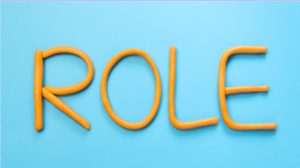
Mold, a common household nuisance, can quickly take root in damp, humid environments, posing health risks and causing damage to homes and buildings if left unchecked. Effective mold removal is essential for restoring healthy indoor environments and preventing further infestation. In this comprehensive guide, we’ll explore the process of mold removal, from identification and assessment to remediation and prevention strategies.
Understanding Mold: The Silent Invader
Mold is a type of fungus that thrives in moist environments, such as bathrooms, basements, and attics. It reproduces by releasing spores into the air, which can settle on surfaces and grow into new mold colonies under the right conditions. Common types of mold include black mold (Stachybotrys chartarum), which is known for its toxic properties, as well as other varieties such as Aspergillus and Penicillium.
Identifying the presence of mold in your home is the first step in effective mold removal. Signs of mold infestation include musty odors, visible mold growth on walls, ceilings, or other surfaces, and water damage such as discoloration or warping. If you suspect mold in your home, it’s essential to address it promptly to prevent further damage and health risks.
Assessment and Inspection: Identifying the Scope of the Problem
Before beginning the mold removal process, it’s crucial to conduct a thorough assessment and inspection to determine the extent of the mold infestation and identify any underlying causes, such as water leaks or poor ventilation. This may involve visually inspecting affected areas, testing for mold spores in the air or on surfaces, and assessing moisture levels using specialized equipment.
Professional mold inspectors or remediation experts can provide valuable insights and recommendations based on their findings, helping you develop an effective remediation plan tailored to the specific needs and requirements of your situation. Additionally, they can identify any potential health risks associated with the mold infestation and advise on appropriate safety precautions to protect occupants during the removal process.
Remediation Techniques: Safely Removing Mold Contamination
Once the extent of the mold infestation has been determined, the next step is to implement remediation techniques to safely and effectively remove mold contamination from the affected areas. Depending on the severity of the infestation and the type of mold involved, remediation techniques may vary but generally follow these steps:
- Containment: To prevent the spread of mold spores to unaffected areas of the home, containment measures such as sealing off the affected area with plastic sheeting and using negative air pressure systems may be employed.
- Removal: Mold-infested materials such as drywall, carpeting, or insulation may need to be removed and disposed of properly to eliminate the source of contamination. Porous materials that cannot be effectively cleaned may need to be replaced.
- Cleaning: Non-porous surfaces can be cleaned using specialized mold removal products and techniques to eliminate mold growth and spores. HEPA vacuums and air scrubbers may be used to remove airborne mold particles.
- Disinfection: After removal and cleaning, affected areas are treated with disinfectants to kill any remaining mold spores and prevent regrowth. It’s essential to use EPA-approved disinfectants and follow manufacturer instructions for safe and effective application.
Conclusion:
In conclusion, effective mold removal is essential for maintaining healthy indoor environments and preventing damage to homes and buildings. By following the steps outlined in this guide, you can safely and effectively remove mold contamination from your home and implement preventive strategies to keep mold at bay in the future. Whether you’re dealing with a small mold problem or a severe infestation, taking prompt action and enlisting professional help when needed will ensure a mold-free environment for you and your family to enjoy.



